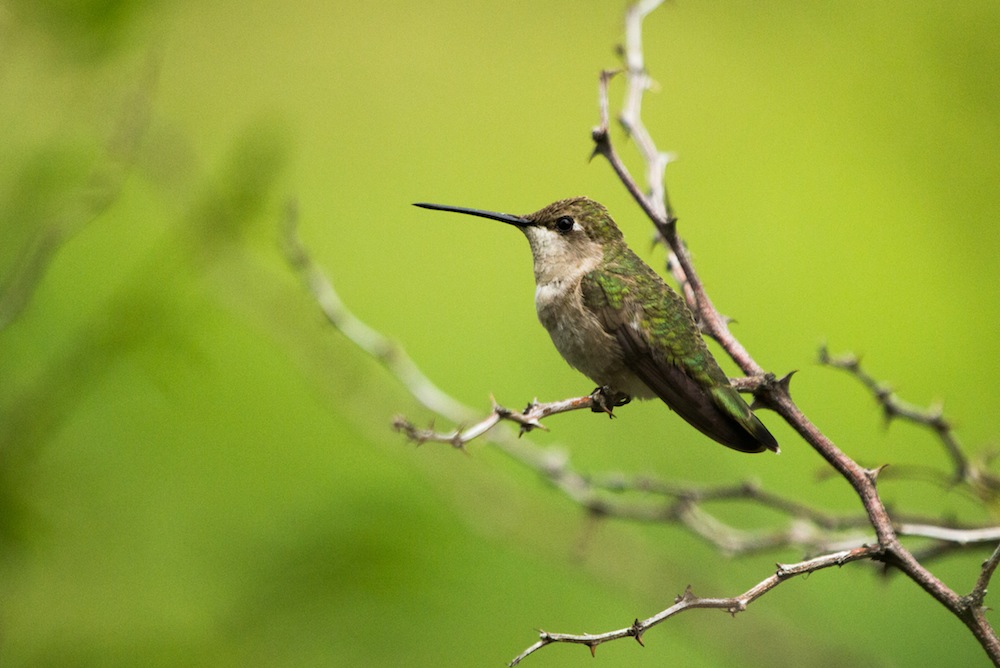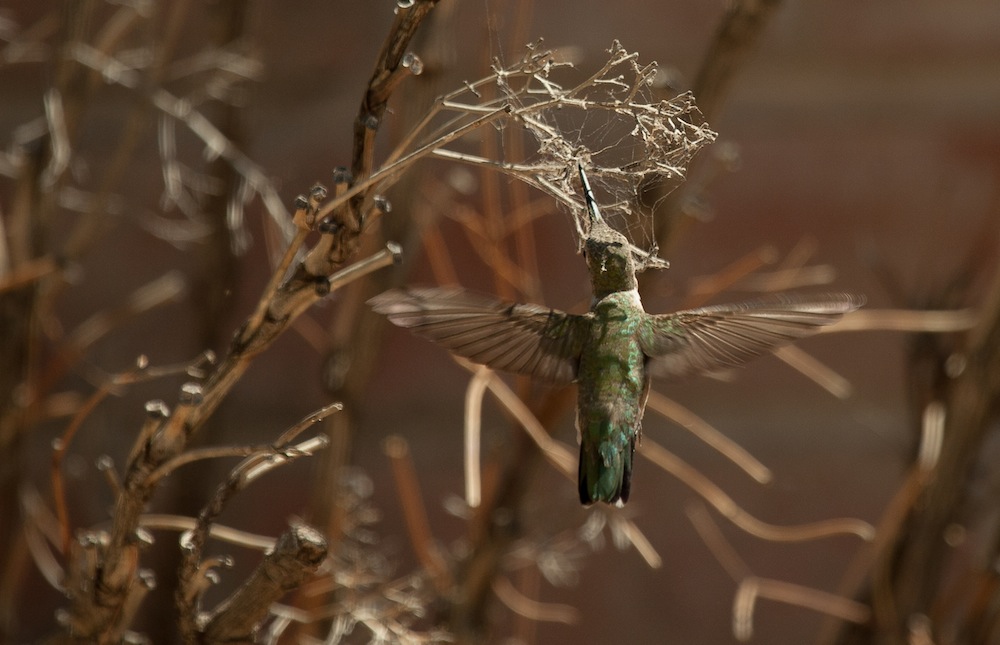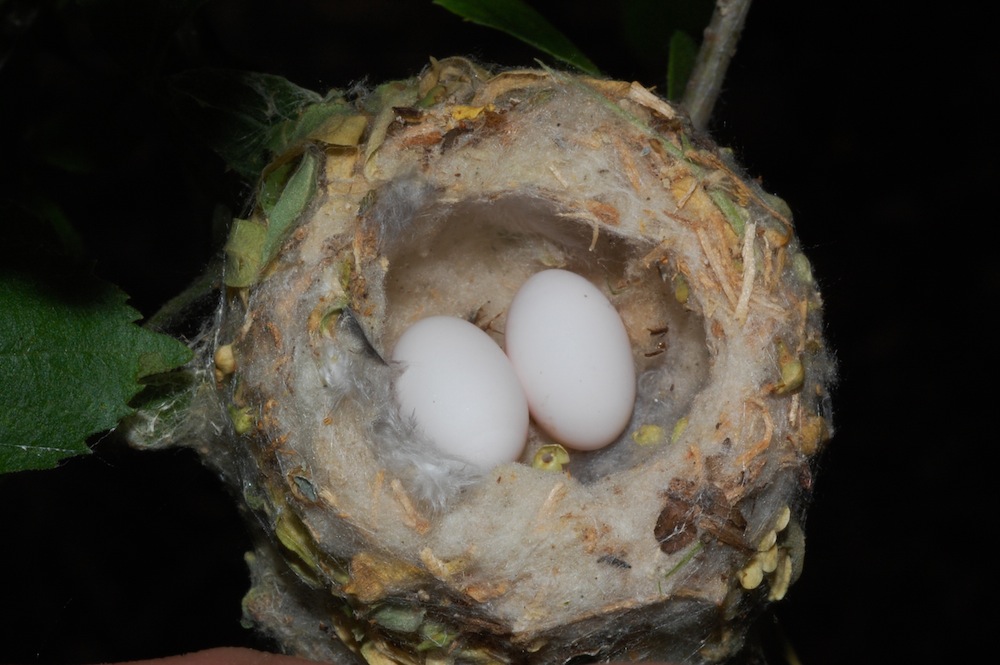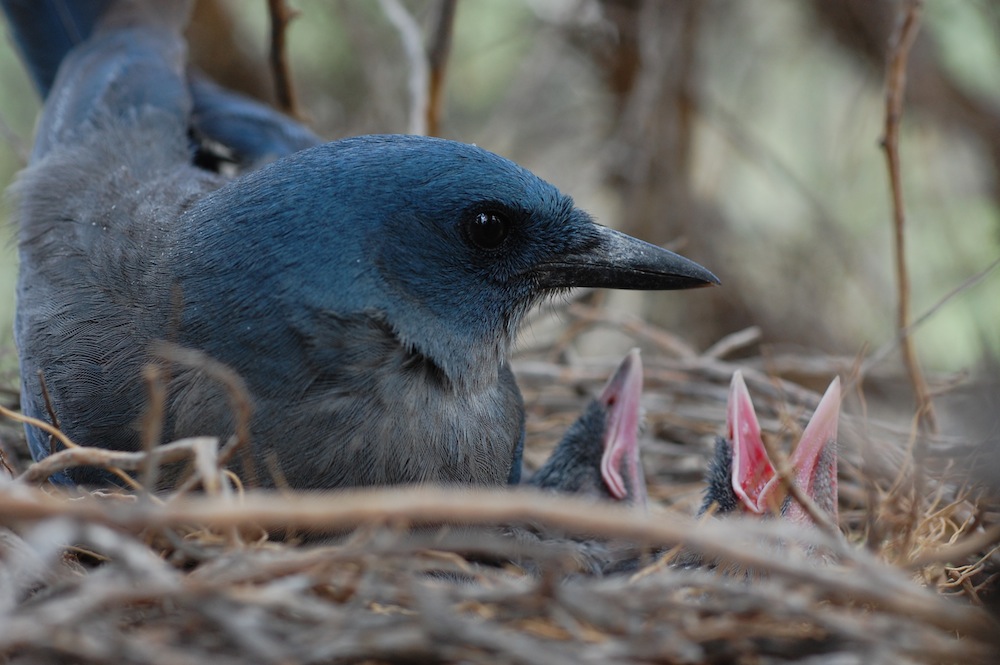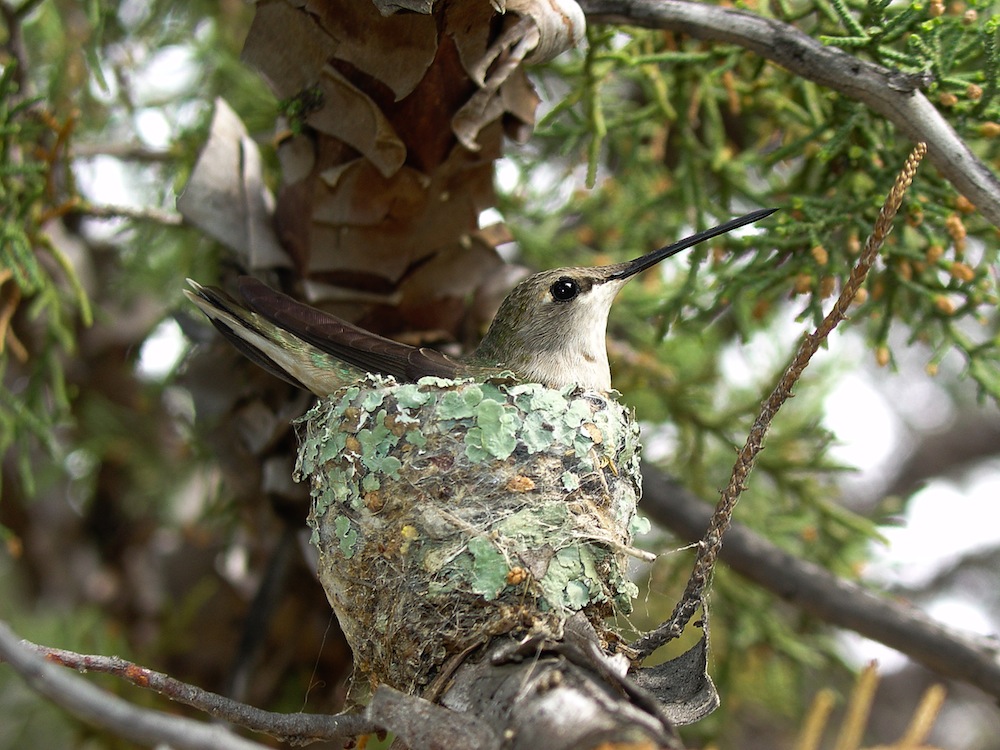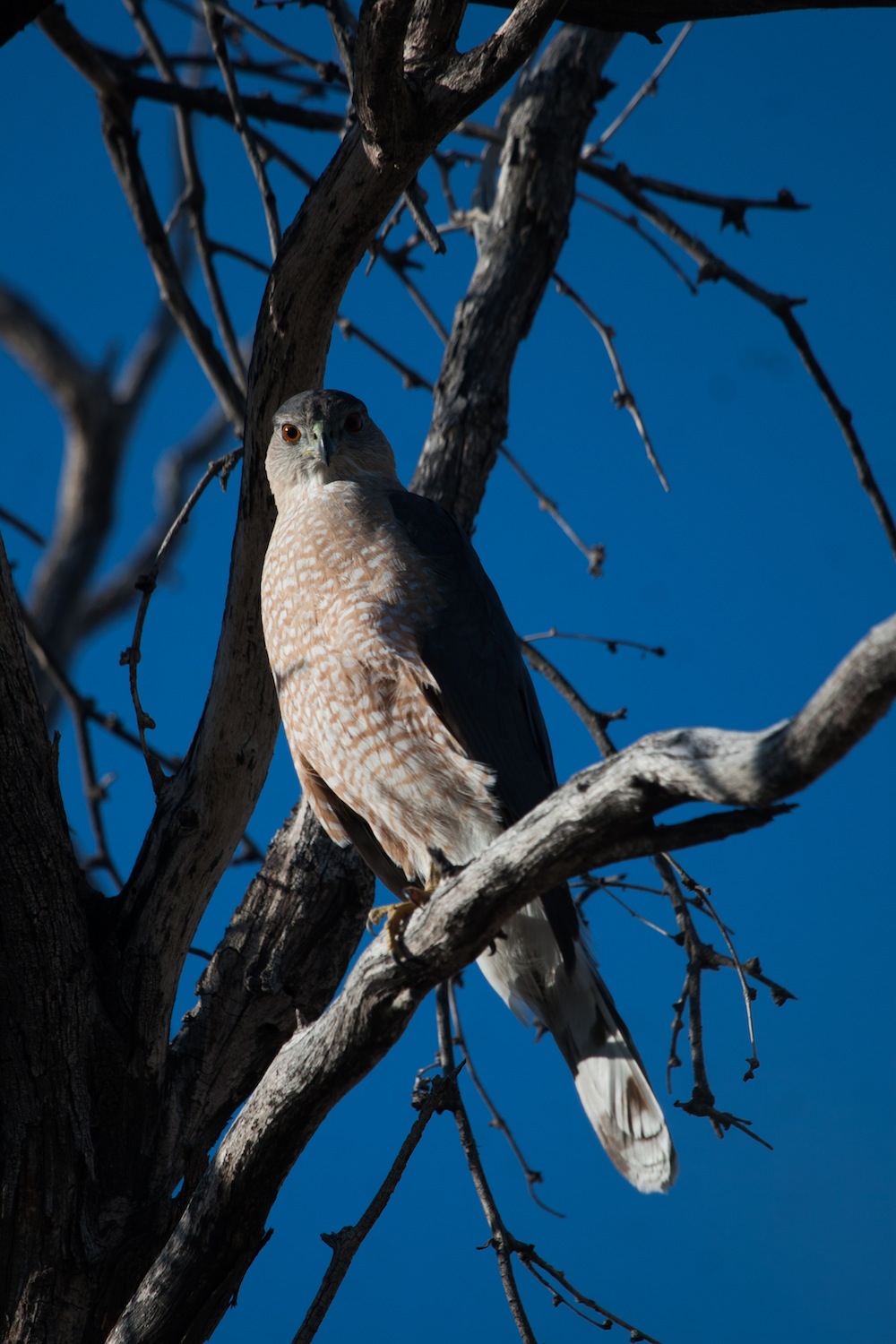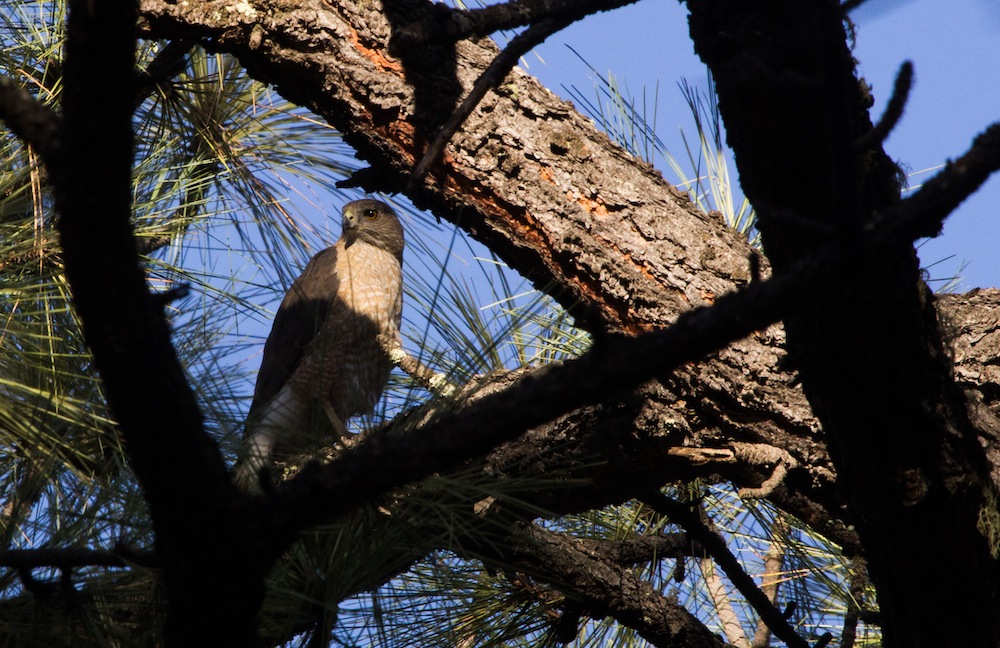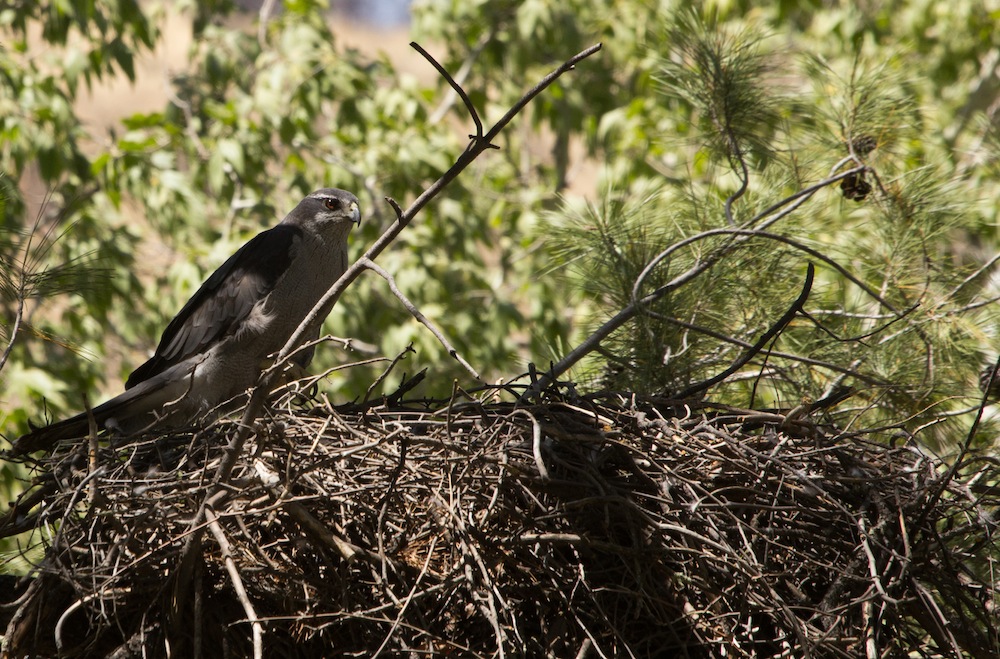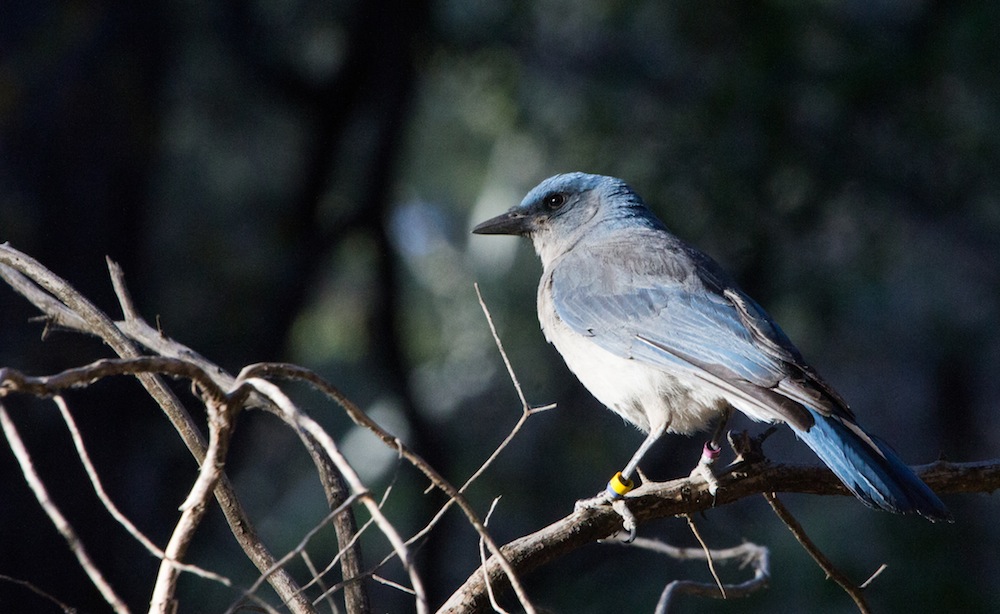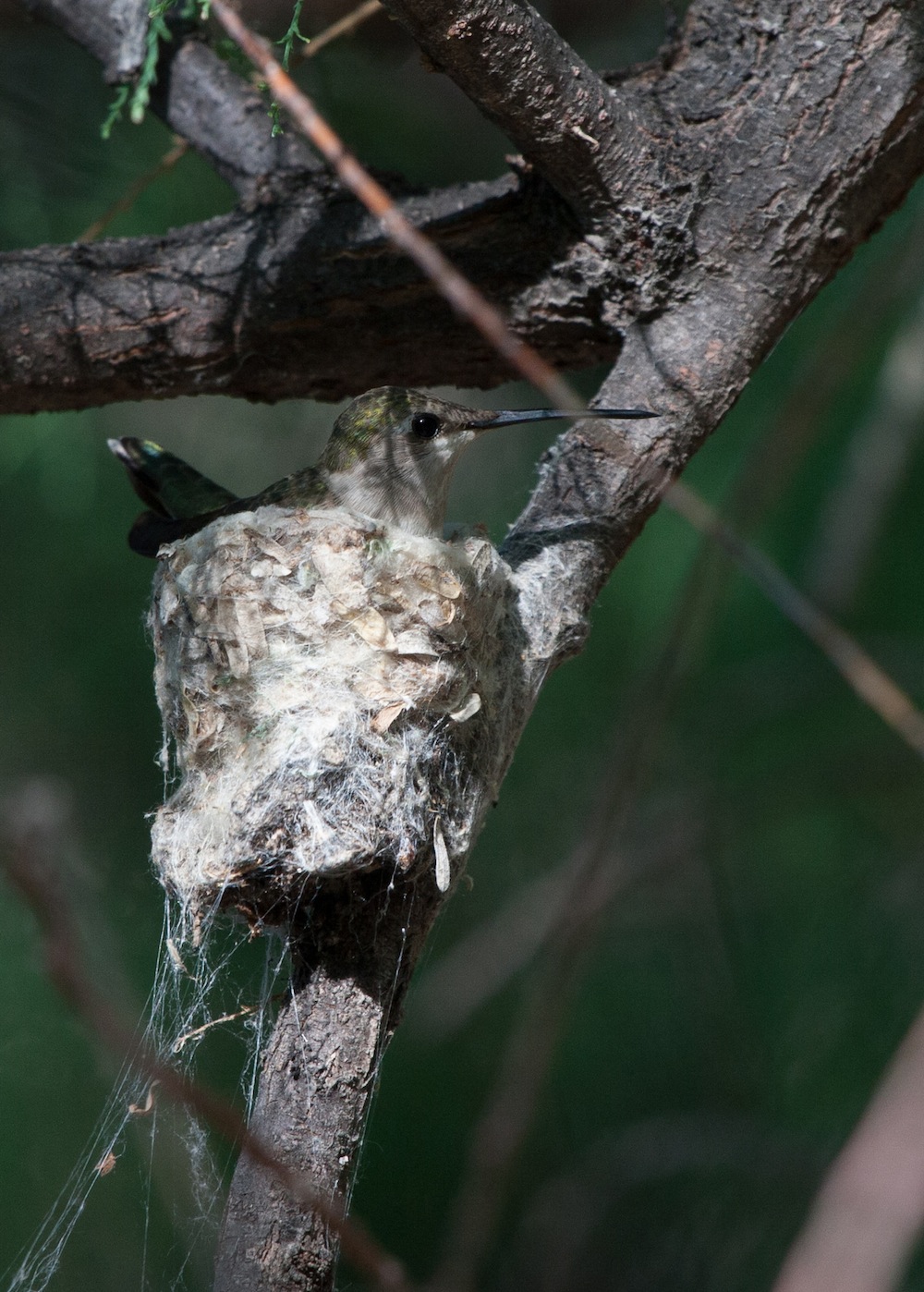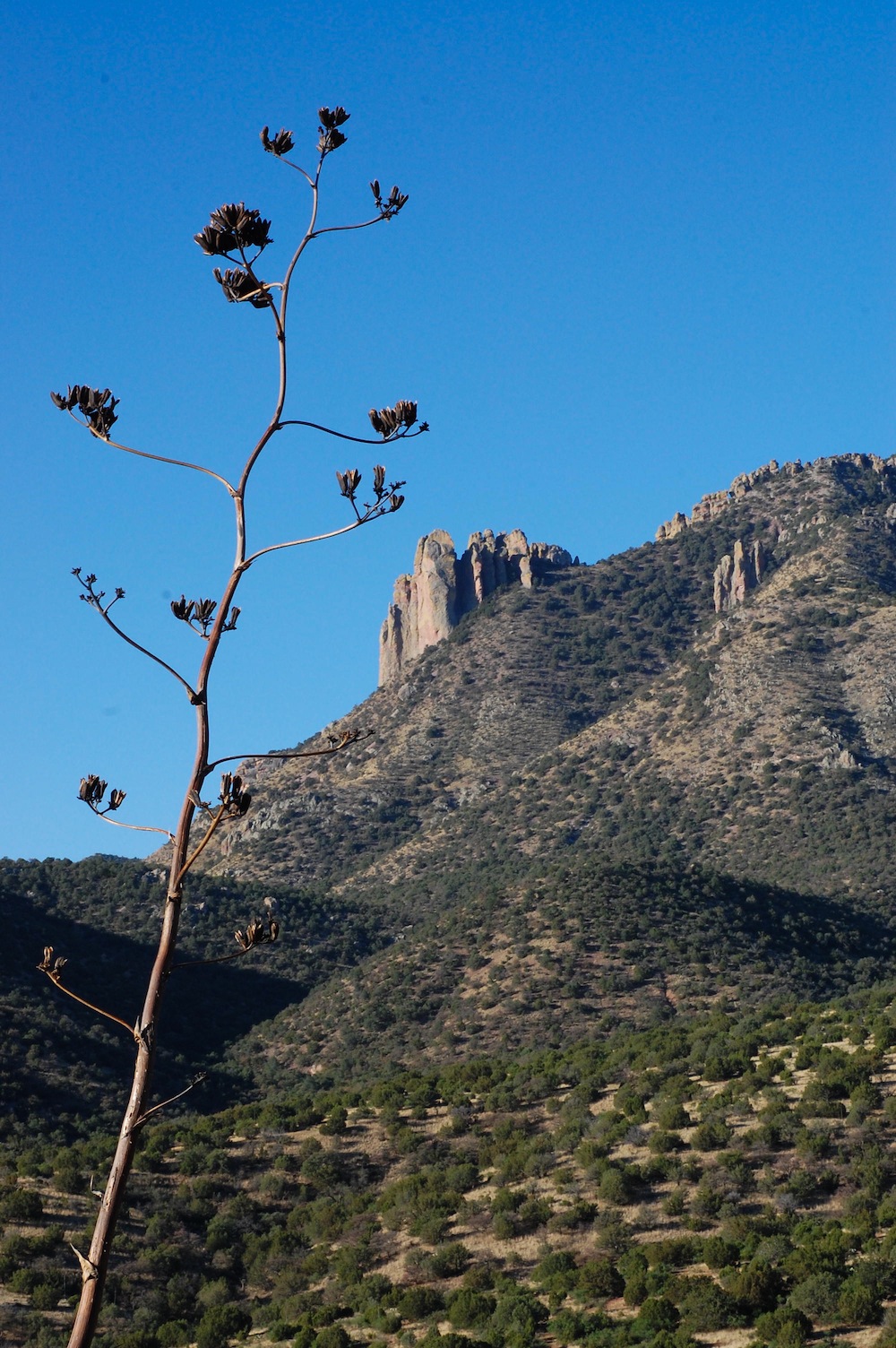Birds of a Feather: Photos of Hummingbirds, Hawks & Jays
In the Chiricahua Mountains of Arizona, black-chinned hummingbirds have a clever strategy to keep their nests safe: They recruit unknowing hawks for home security. Hummingbird nests cluster near hawk nests, and those hawks keep away the predatory jays that snatch hummingbird eggs, researchers reported Sept. 4 in the journal Science Advances. [Read full story about how hummingbirds recruit hawks for protection]
Gem of a bird
A female black-chinned hummingbird (Archilochus alexandri) perches on a twig. The daily survival rate of a hummingbird nest built nearby a hawk's nest is 31 percent, compared with only 6 percent for hummingbird nests not near hawk roosts. (Credit: Harold F. Greeney, Yanayacu Biological Station)
Nesting materials
A female black-chinned hummingbird gathers spider web, which she will combine with plant down to build a nest. Black-chinned hummingbirds are widespread throughout the western United States and Mexico. They grow to be about 3.5 inches (9 centimeters) long, according to The Cornell Lab of Ornithology, about the same size as the well-known Ruby-throated hummingbird. (Credit: Harold F. Greeney, Yanayacu Biological Station)
Tiny nest
The nest of a black-chinned hummingbird, made out of leaves, plant down and spider web. Each egg is tiny — about the size of a coffee bean. However, as far as predatory jays are concerned, these eggs are perfect morsels of fat, protein and calcium. (Credit: Harold F. Greeney, Yanayacu Biological Station)
Get the world’s most fascinating discoveries delivered straight to your inbox.
Dangerous jay
A Mexican jay (Ampelocoma wollweberi) sits in its nest next to a handful of hungry hatchlings. Mexican jays snatch eggs from hummingbird nests to feed their own babies. In areas where there are no hawks to keep these jays away, more than 90 percent of hummingbird nests fall prey to predation from jays and similar birds. (Credit: Harold F. Greeney, Yanayacu Biological Station)
Guarding eggs
A female black-chinned hummingbird warms her eggs in Arizona's Chiricahua Mountains. These hummingbirds are common along rivers and in canyons in the Southwest, according to the Cornell Ornithology Lab; in some places, there are nests every 330 feet (100 meters) or so. In the Chiricahua Mountains, about 80 percent of these hummingbird nests are built near the roosts of hawks. (Credit: Harold F. Greeney, Yanayacu Biological Station)
Cooper's hawk
A Cooper's hawk (Accipiter cooperii), a fierce predator of Mexican jays. These hawks stalk woodlands for prey, and their nests deter Mexican jays from coming around, according to new research. These birds are found throughout the United States and Mexico, as well as some parts of southern Canada. Unlike falcons that kill their prey by biting, Cooper's hawks usually squeeze their quarry to death with their feet, according to the Cornell Ornithology Lab. (Credit: Harold F. Greeney, Yanayacu Biological Station)
Hunting hawk
Cooper's hawks prefer to hunt in forested areas; they watch for prey from the tree canopy and swoop downward to deliver death from above. As a result, their nests create a sort of cone-shaped "zone of safety" that jays and other smaller predators avoid. In this safe zone, black-chinned hummingbirds build their nests.
The different in survival for hummingbirds is stark. The daily survival rate of nests build within about 985 feet (300 m) of a hawk's nest is 19 percent. Inside the cone-shaped safety zone, the survival rate jumps to 52 percent. (Credit: Harold F. Greeney, Yanayacu Biological Station)
Jay for breakfast
Another unwitting hummingbird bodyguard is the northern goshawk (Accipiter gentilis), seen here bringing a dead jay back to its nestlings. Native to much of the northern United States, Canada and western Mexico, this woodland hunter also preys on rabbits and squirrels. Like Cooper's hawks, goshawks (pronounced "goose hawk") wait on a perch and then plunge down on prey from above. (Credit: Harold F. Greeney, Yanayacu Biological Station)
Hunter and hunted
Mexican jays live in west Texas, New Mexico, Arizona and parts of Mexico. They tend to live in large groups of up to 25 members, according to the Cornell Ornithology Lab, and multiple group members share responsibility for feeding nestlings. They also join together to make alarm calls in response to predators and to mob predators, often driving away much larger birds to protect nests and nestlings. (Credit: Harold F. Greeney, Yanayacu Biological Station)
Watchful parent
A black-chinned hummingbird watches for predators as she sits on her nest in Arizona's Chiricahua Mountains. Predators are a major danger to hummingbird nests. In cases where a guardian hawk's nest near a hummingbird nest is destroyed, survival of the hummingbird nest drops from 32 percent to a mere 3 percent, day-by-day. (Credit: Harold F. Greeney, Yanayacu Biological Station)
The Chiricahua Mountains
The Chiricahua Mountains of southwestern Arizona are home to hawks, hummingbirds and predatory jays, all bound together in an ecological dance. Hummingbirds try to avoid predation by jays by building their nests close to hawks. Jays stay away so they don't become hawk food. (Credit: Harold F. Greeney, Yanayacu Biological Station)
Follow Stephanie Pappas on Twitter and Google+. Follow us @livescience, Facebook & Google+.

Stephanie Pappas is a contributing writer for Live Science, covering topics ranging from geoscience to archaeology to the human brain and behavior. She was previously a senior writer for Live Science but is now a freelancer based in Denver, Colorado, and regularly contributes to Scientific American and The Monitor, the monthly magazine of the American Psychological Association. Stephanie received a bachelor's degree in psychology from the University of South Carolina and a graduate certificate in science communication from the University of California, Santa Cruz.


